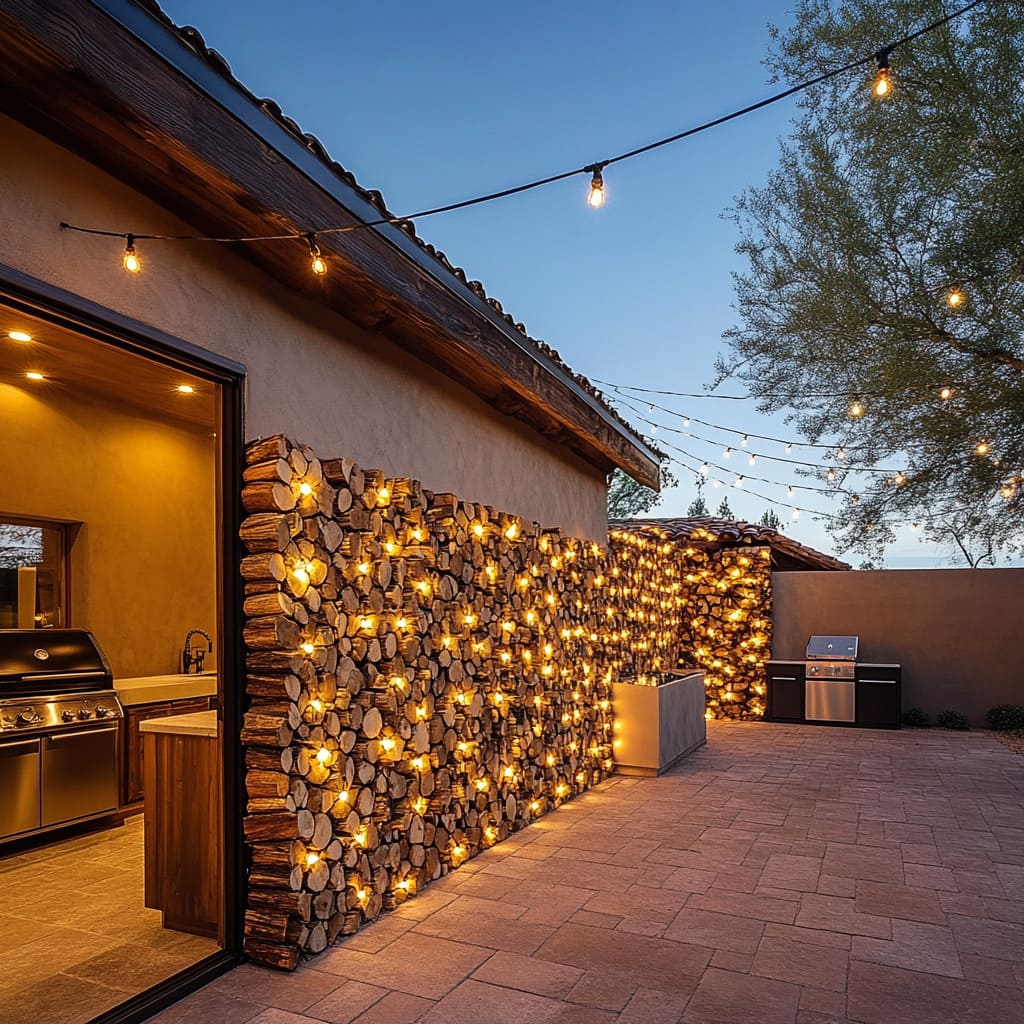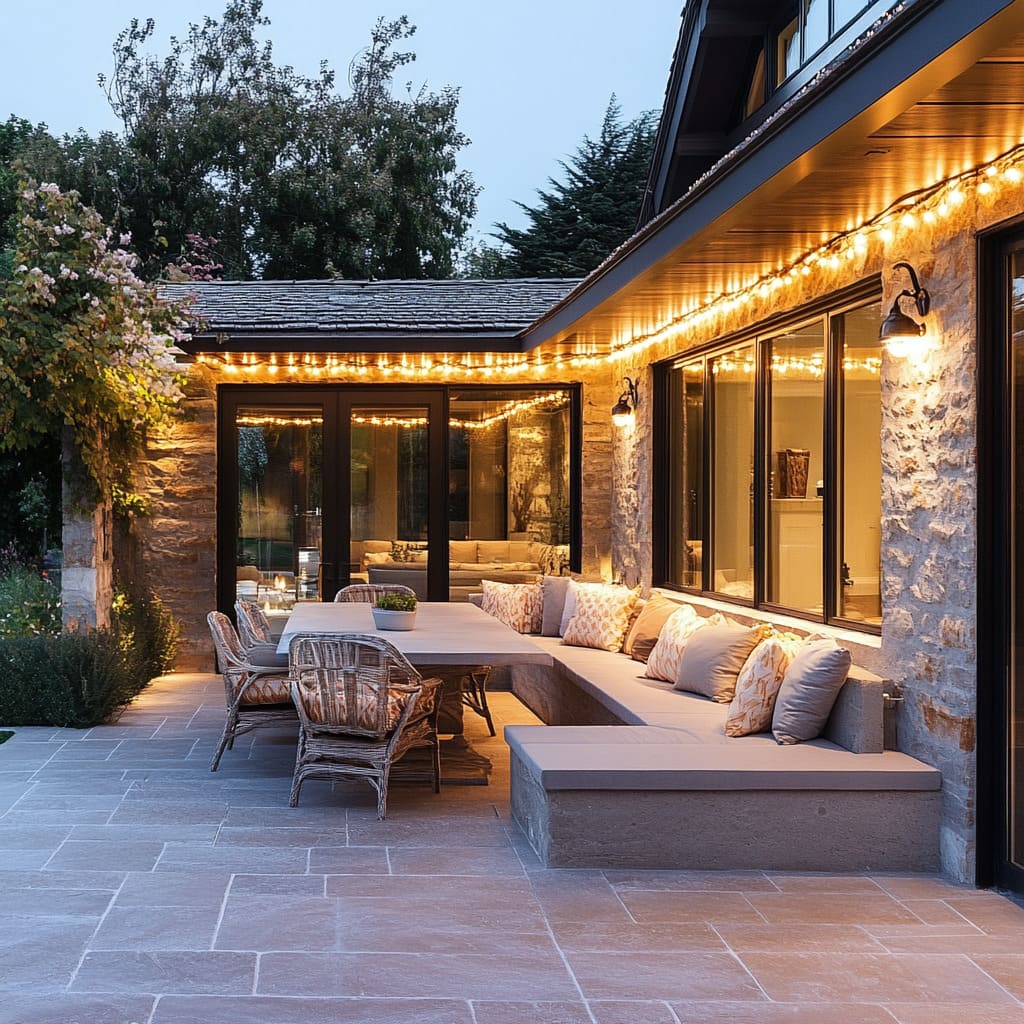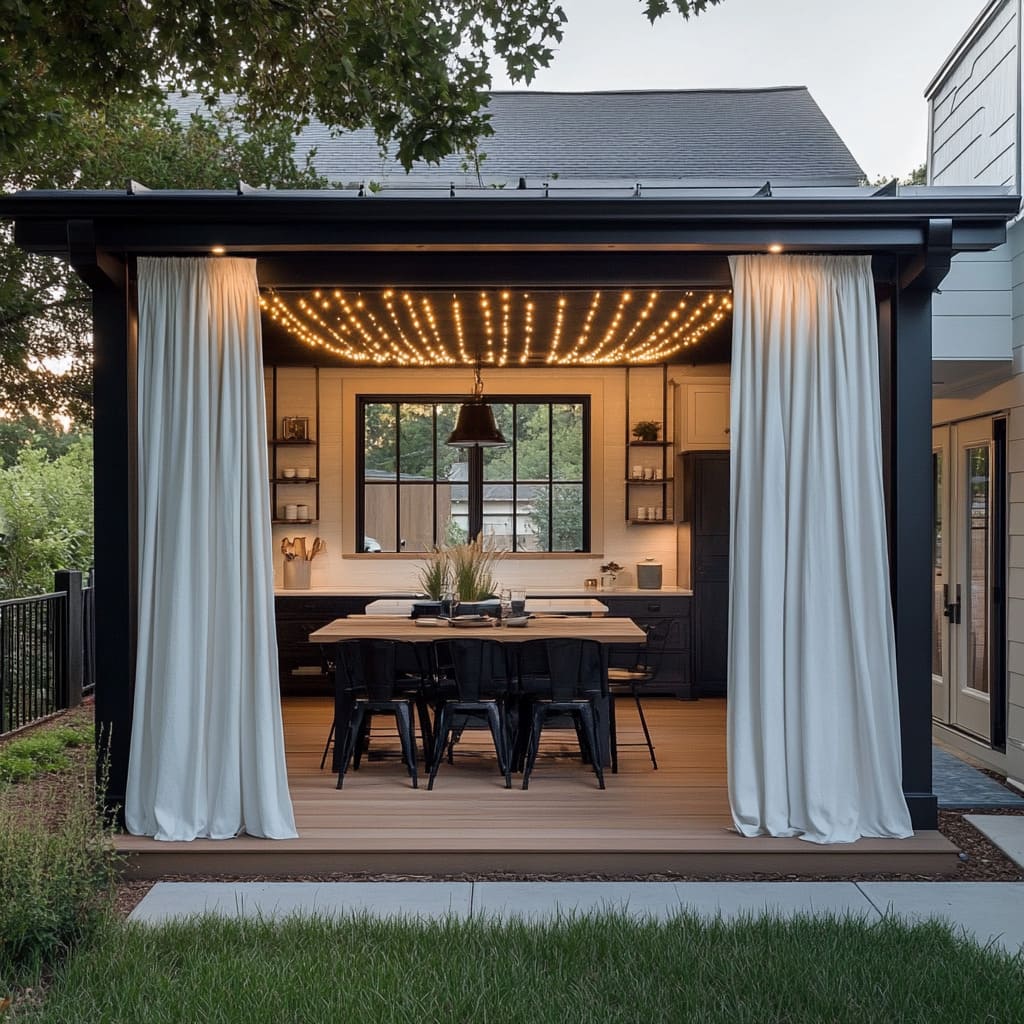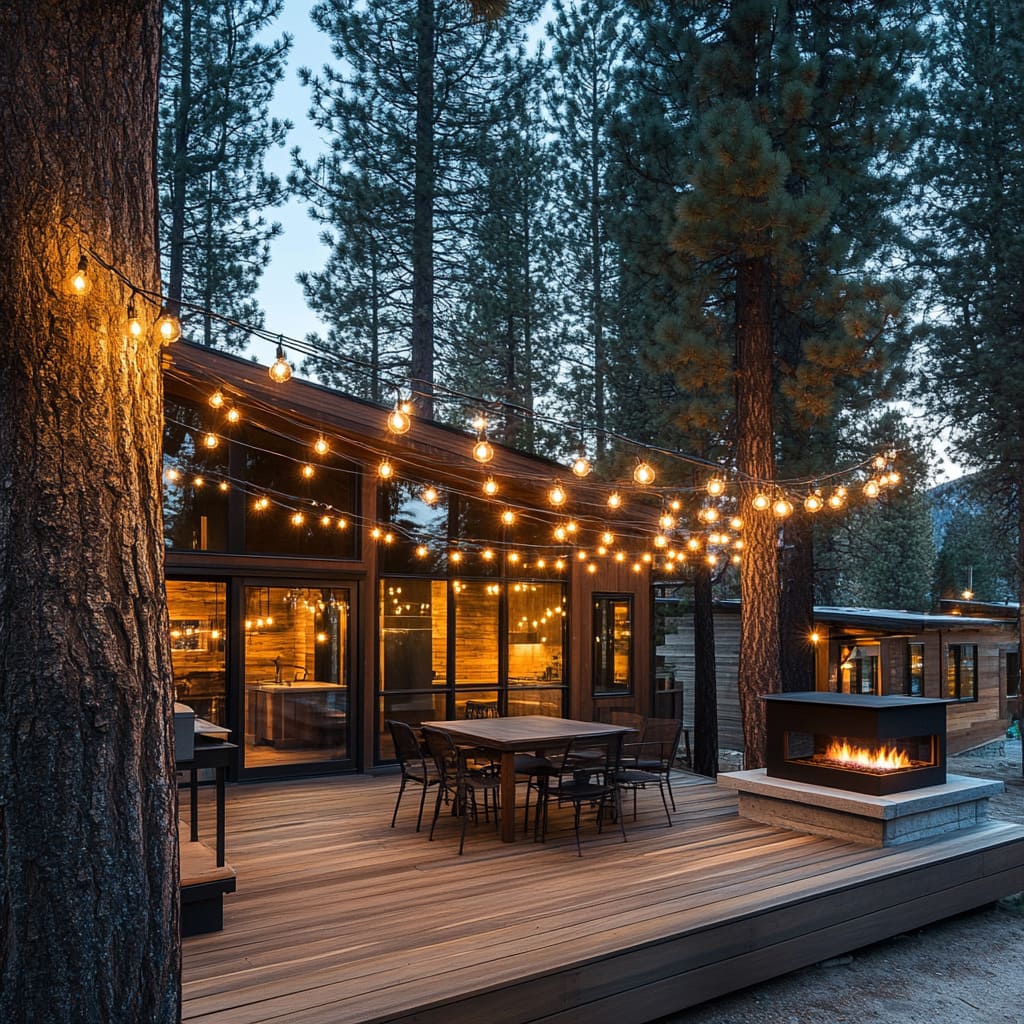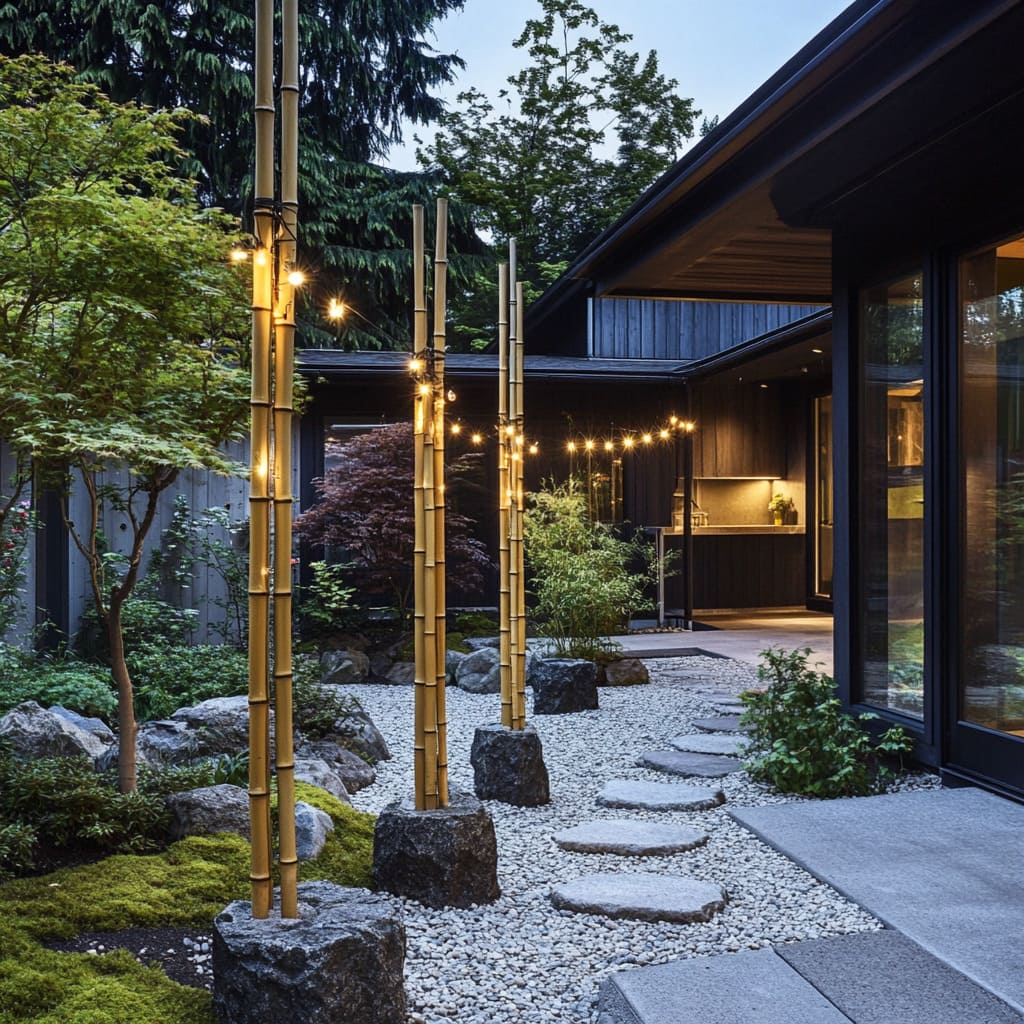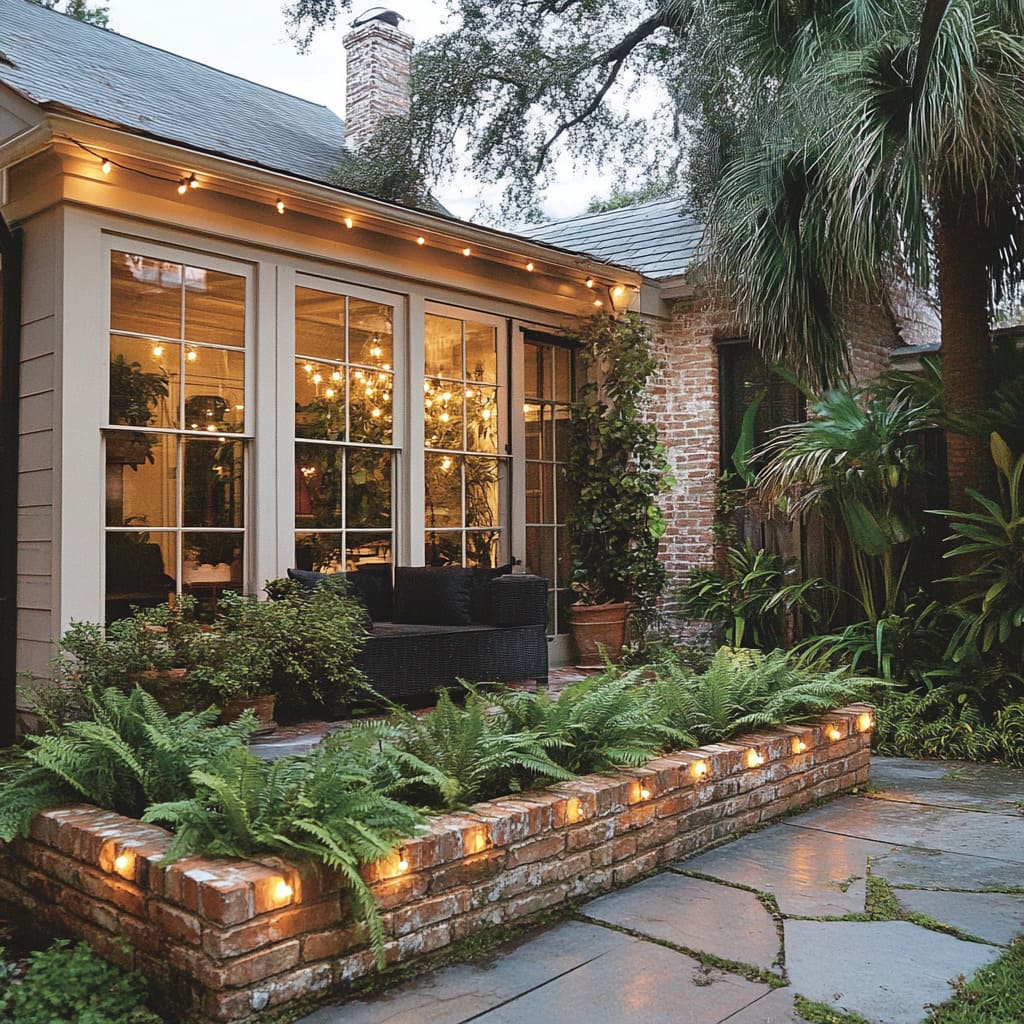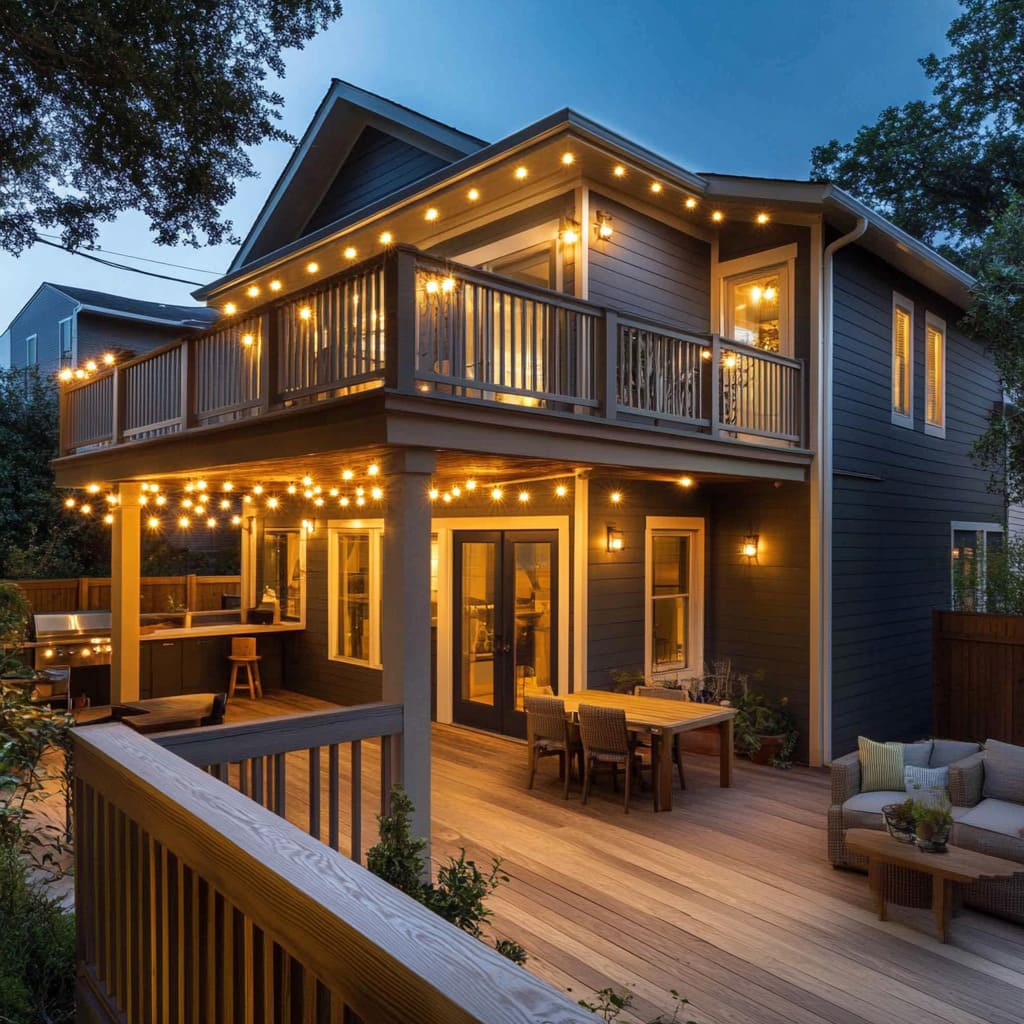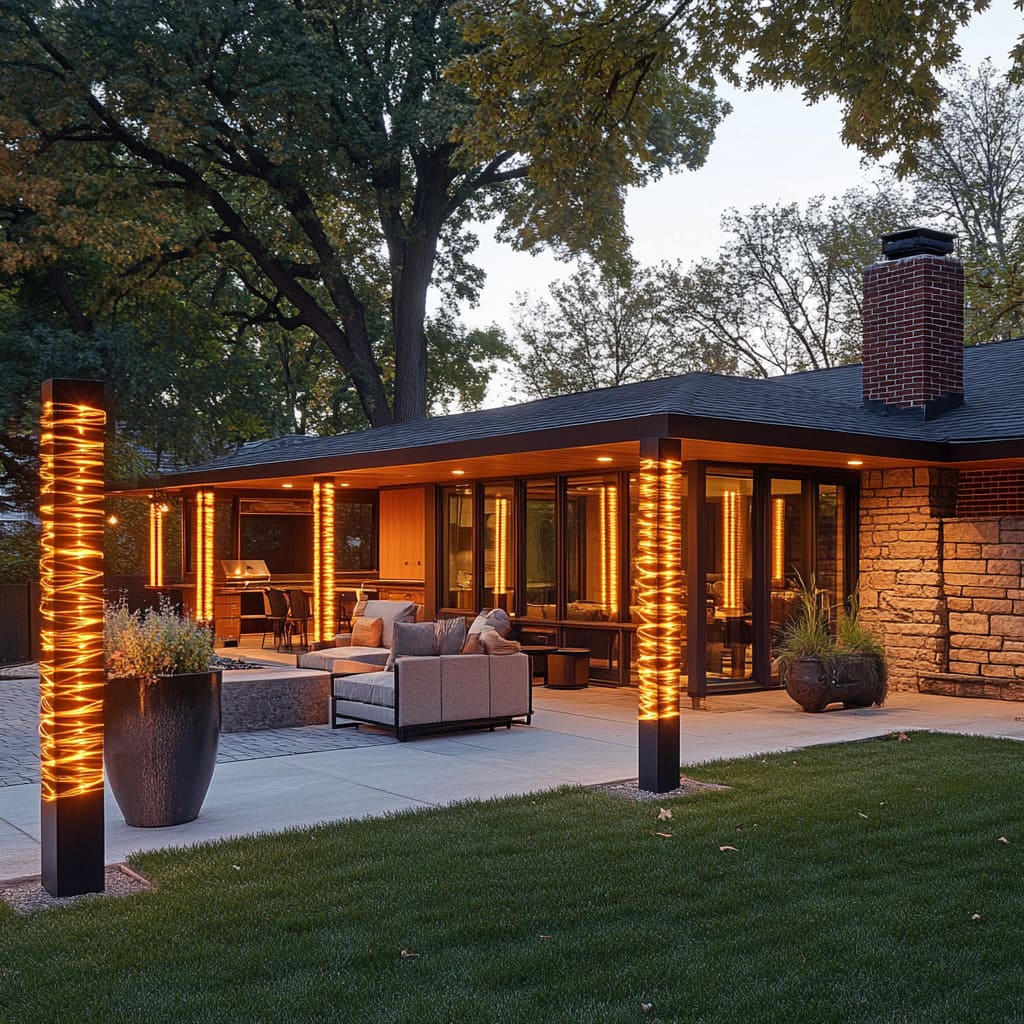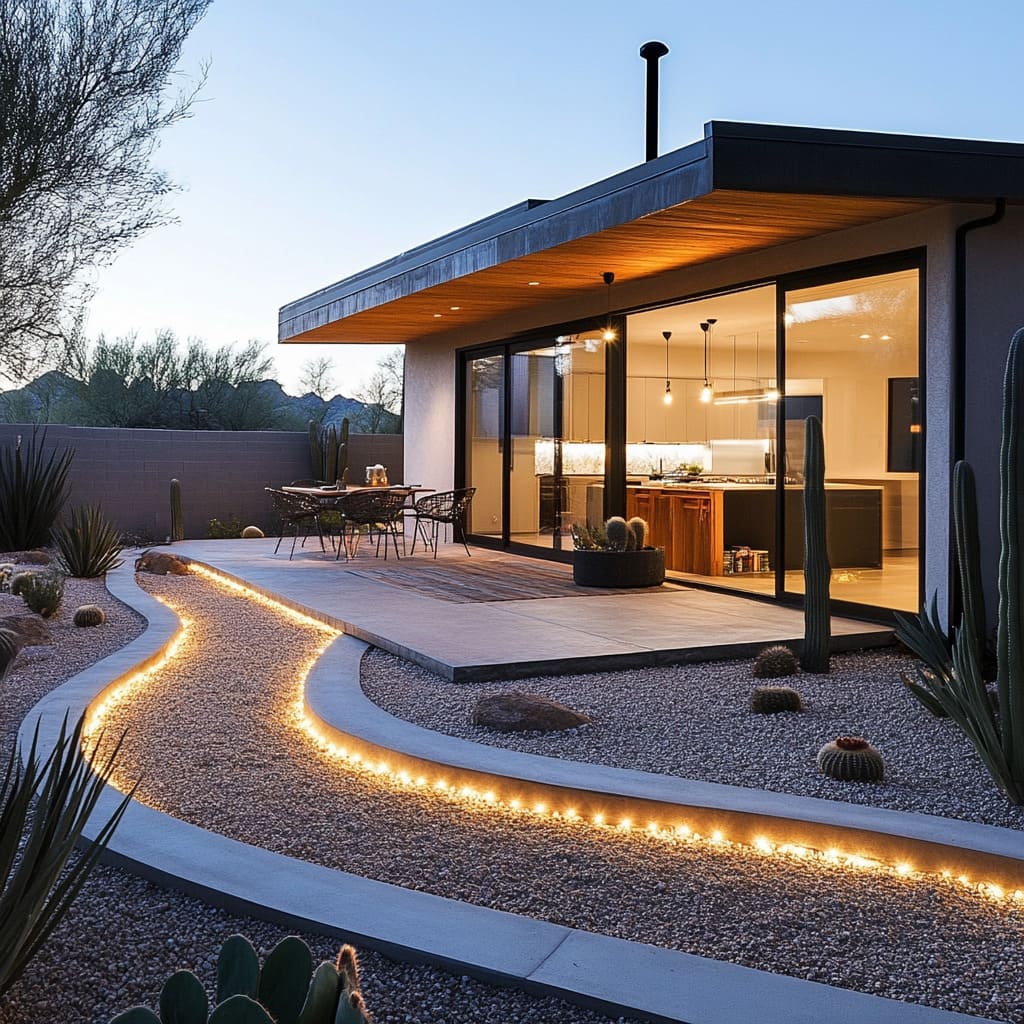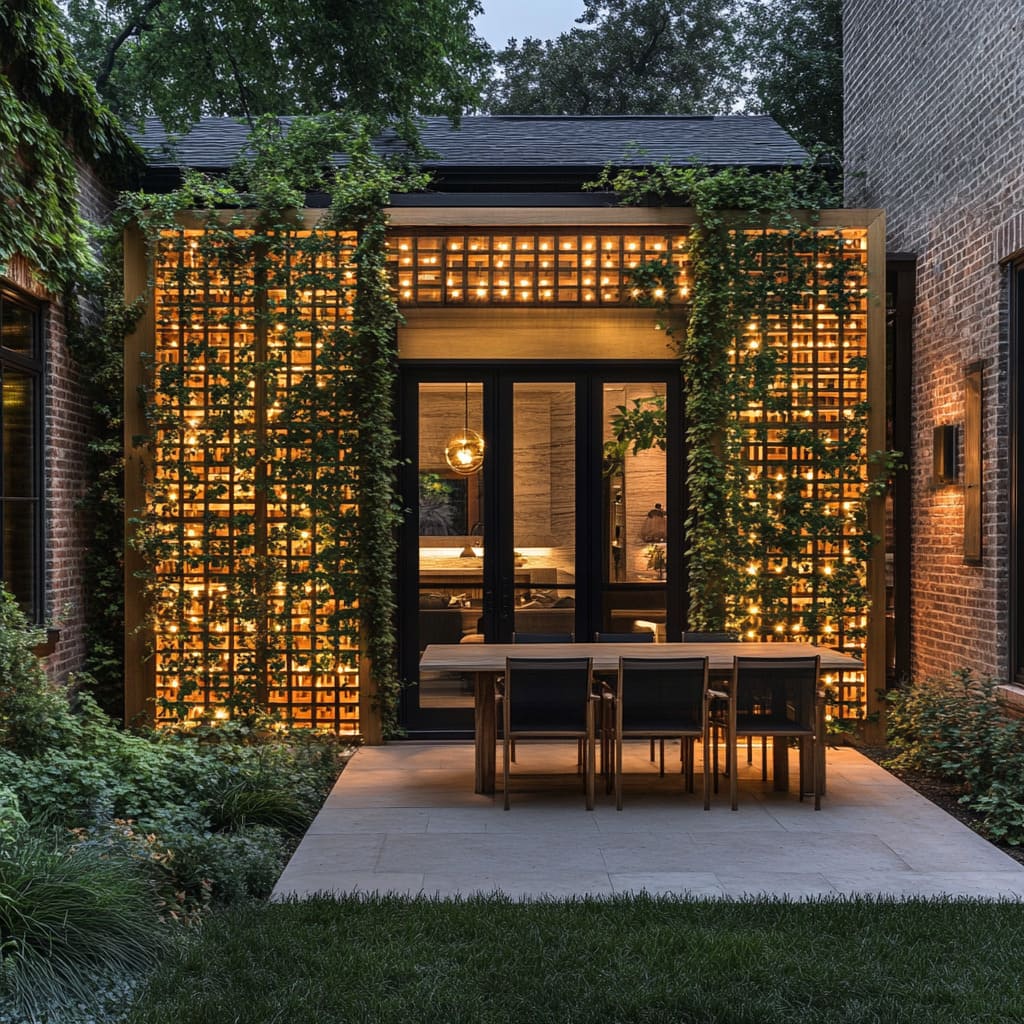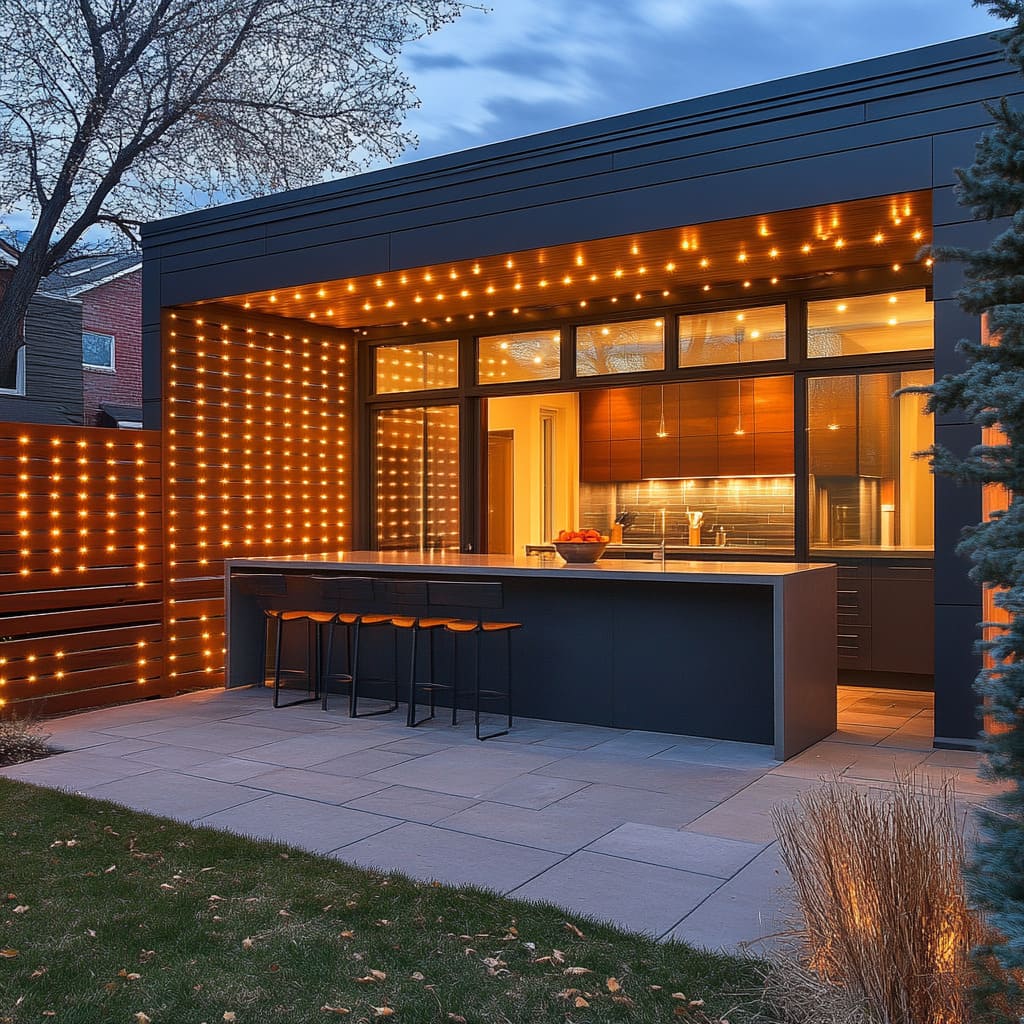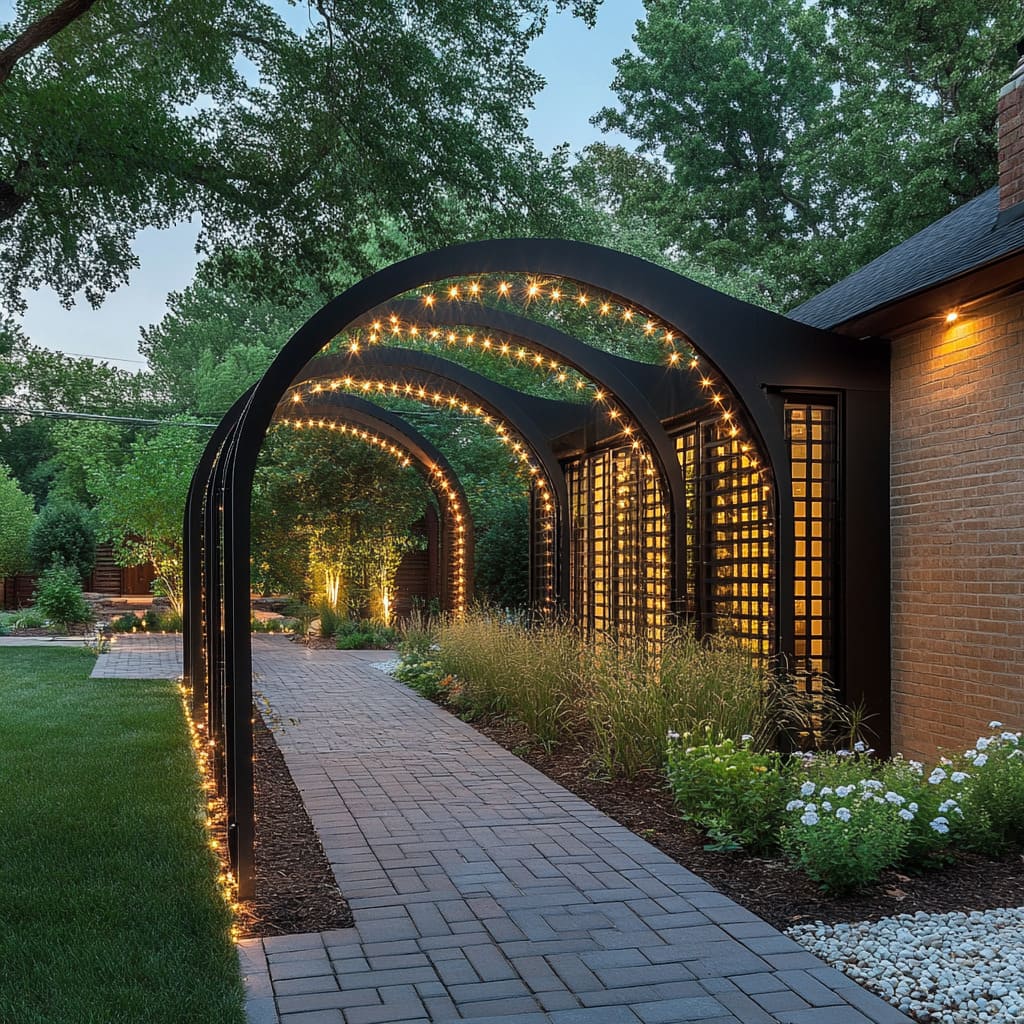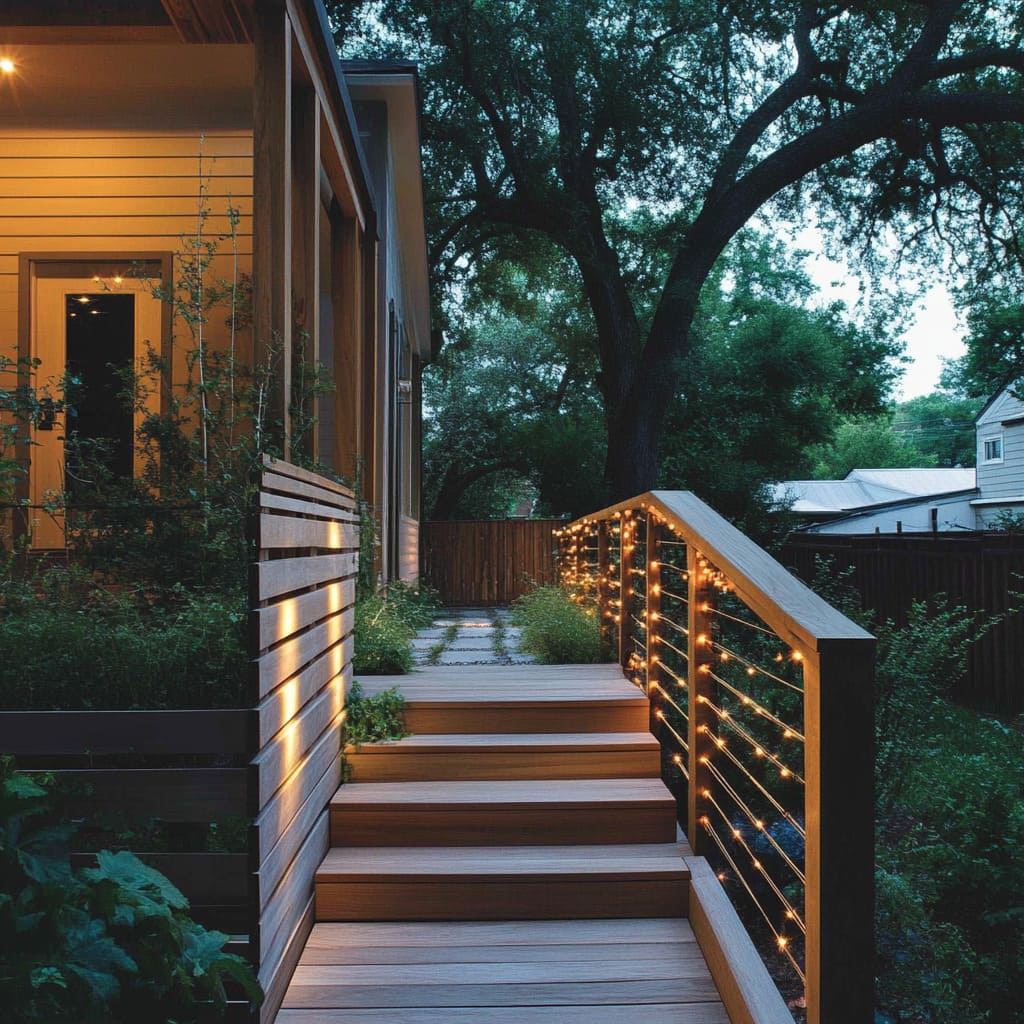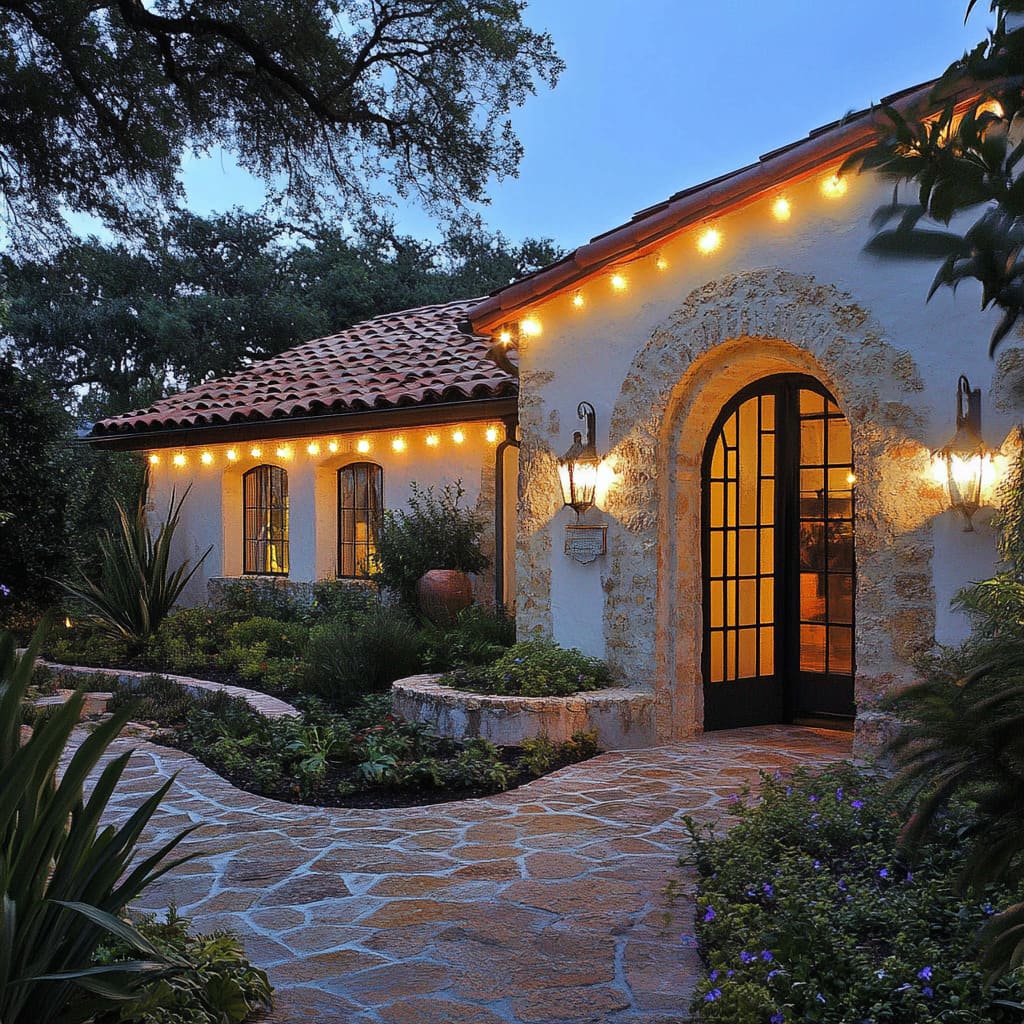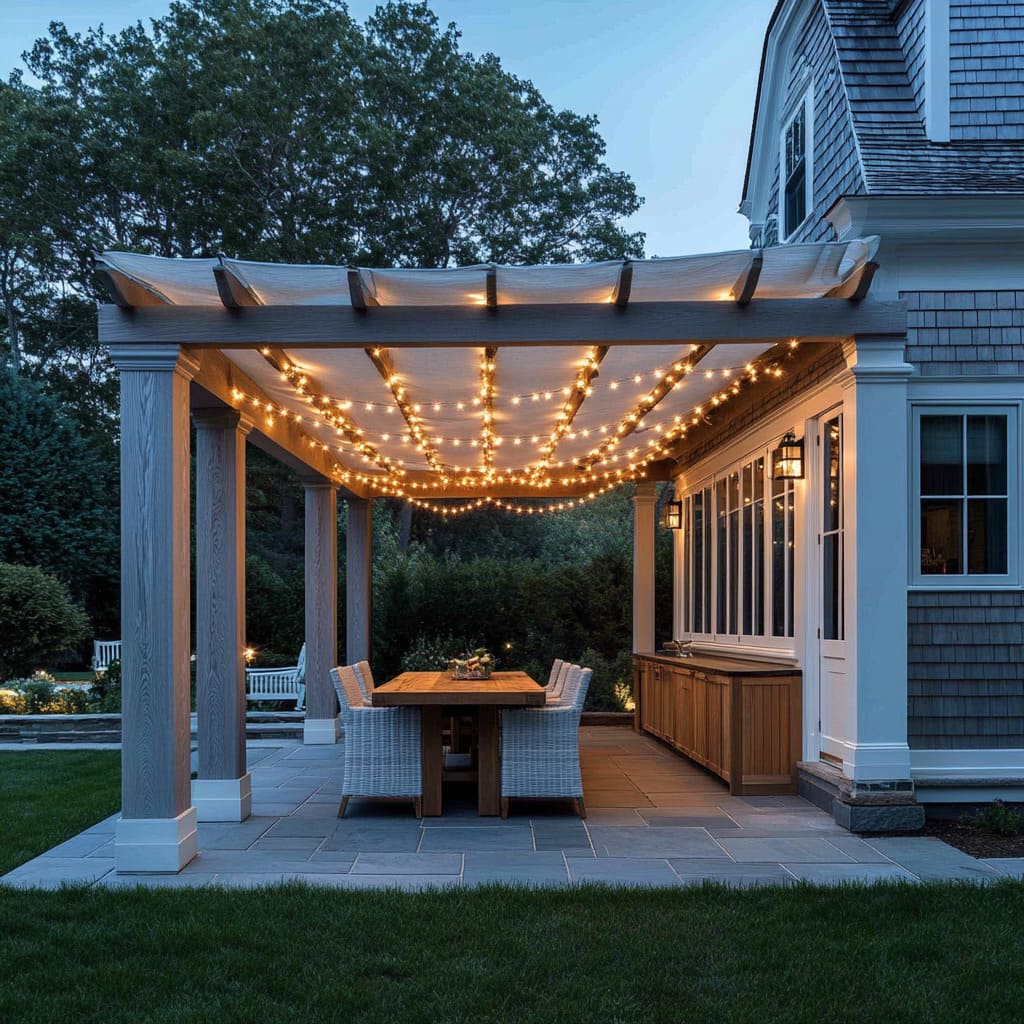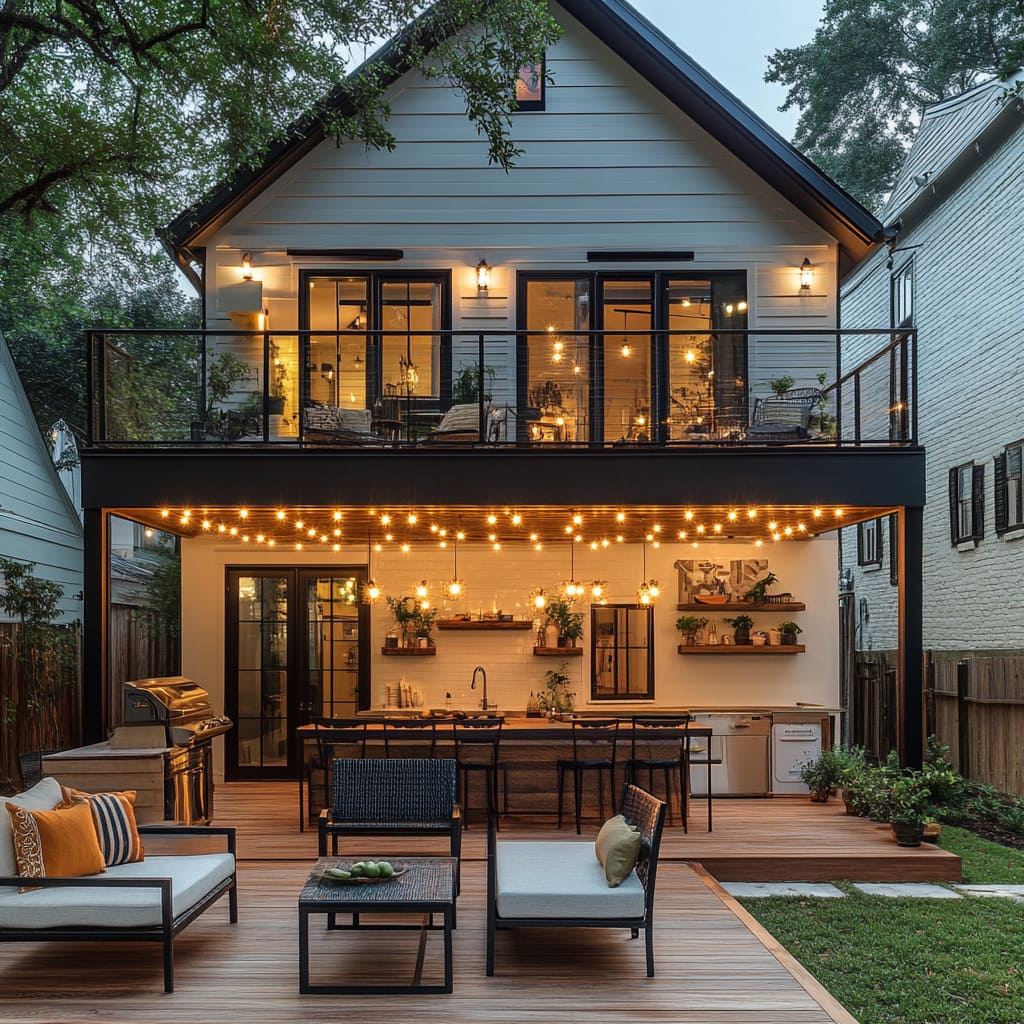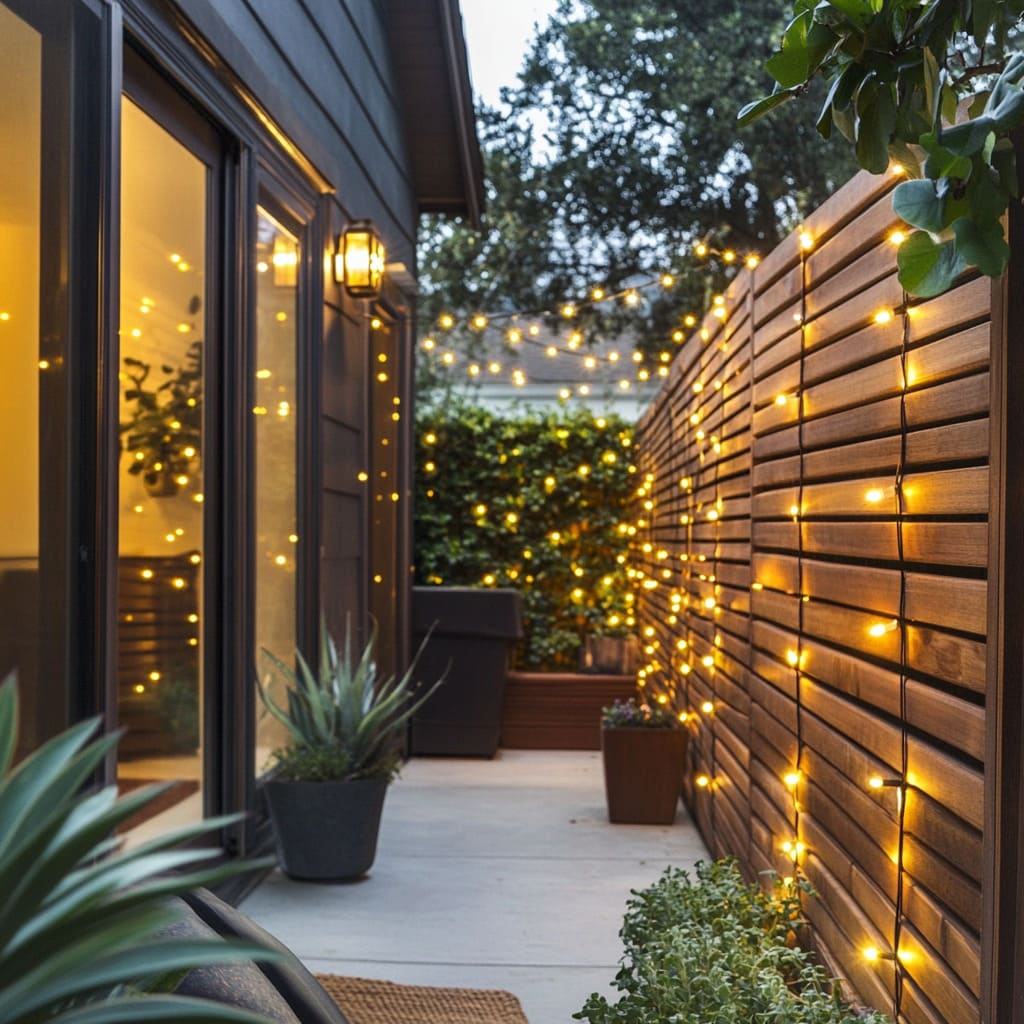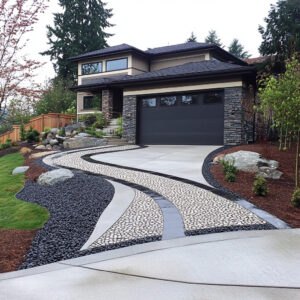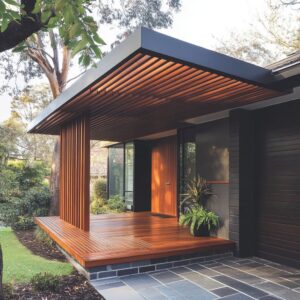This guide breaks down how modern backyard string lighting can shape the entire feel of a patio without drawing too much attention to itself. Instead of showing off, these ideas work quietly in the background—bringing together soft glows, clever placement, and smart use of structure.
What might look simple at first glance often hides precise layout choices, reflective tricks, and natural layering. If you’re searching for fresh, creative ideas for string lights on patio setups, what follows will help you see beyond the usual.
Every detail in these setups—from bulb shape to how they interact with glass, stone, and plant life—matters. This isn’t a list of fairy lights randomly tossed across fences.
It’s a close look at how experienced designers use light as part of the design, not something added after the fact. The goal: to help you spot the difference between average outdoor lighting and setups that feel completely pulled together, even if you don’t realize why at first.
Perimeter-Focused and Reflection-Based Lighting
One approach that stands out for its subtle impact is placing string lights along the edge of a house—particularly under the roof eaves—instead of hanging them directly overhead. This shift changes how the whole patio feels.
Lights tucked into the perimeter avoid glare right above guests, keeping the seating area relaxed while outlining the architecture in soft, warm tones. The glow wraps around the outdoor zone without feeling like it’s trying too hard.
A good reference is a California-inspired layout where the string lights, made up of tiny warm micro-bulbs, run cleanly under the edge of the roof. What’s clever is how the glow reflects on large glass doors, creating a soft mirror effect.
It’s almost like the house doubles its lights without using more bulbs. That reflection deepens the visual space and adds just enough brightness without any extra fuss.
There’s also a practical layer here—indirect light helps the transition between indoor and outdoor areas feel more fluid. Interior lights spilling through windows blend smoothly with the warm tone of the bulbs outside.
If you’re looking through outdoor patio lights ideas, this setup proves that you don’t need complex wiring or overhead grids. Sometimes the smartest trick is stepping back and letting the lights support the mood instead of controlling it.
Transforming Functional Materials into Backdrops
One of the more inventive uses of string lighting turns plain, everyday materials into something worth a second look. Think beyond fences and pergolas—this is about pulling visual interest out of the unexpected.
In this case, a vertical wall stacked with chopped firewood becomes the main attraction. The cut ends of the logs face outward, forming a tight grid of natural circles.
Woven through the spaces between these pieces, small warm bulbs flicker like scattered embers caught mid-glow. The light doesn’t sit on the surface—it hides inside the wall, creating depth and texture without shouting.
This isn’t your average display. What sets it apart is how the gaps in the stack act like tiny alcoves for light.
You get a pattern that’s partly random, partly controlled—an organic field of glow that shifts depending on where you stand. The bulbs feel embedded, almost as if the wood itself carries the warmth.
There’s no need to hang garlands or add ornaments. The wall does the work with zero clutter.
For those looking into patio string light ideas, this direction shows how lighting can completely redefine basic materials. It also keeps the focus away from overhead clutter, letting vertical surfaces do the storytelling.
If the rest of your patio design leans on neutral or matte finishes, this type of backlit structure adds energy and movement without throwing off the mood.
Using Structural Arches or Portals as Lighting Guides
Arches, whether freestanding or connected to a home, naturally guide how people move through a space. Wrapping them with lights adds a layer of rhythm that people feel before they even realize it.
The trick here is to avoid covering the entire structure. Instead, pinpoint lights are placed along the inside curves and bottom edges.
From a distance, the structure still looks clean. But as you approach, the light slowly reveals itself—first a faint line, then a full frame of warm glow that pulls the eye forward.
This layout works best with dark framing or metal forms where the contrast can really stand out. In one modern ranch-style example, three black metal arches line a gravel path.
The string lights are tucked just behind the edge, out of direct sight unless you’re standing right in front of them. This creates a lighting effect that moves with you.
It’s not static—it builds as you walk, giving the pathway a sense of quiet animation. For anyone digging into ideas for backyard lights, this setup offers a mix of structure and subtlety.
It doesn’t rely on large bulbs or flashy fixtures. Instead, the lights are treated like architectural accents—built into the framework rather than draped on top.
And with just a few design moves, what was once a standard passage becomes one of the strongest visual moments in the yard.
Creating a Ceiling of String Lights
An open patio can feel more connected and grounded when lighting is used to outline a “ceiling” overhead. Instead of hanging a single pendant or scattering lights at random, a grid layout of string lights brings structure and balance to the space.
This type of setup doesn’t just light a spot—it shapes how people see and use the area beneath it. A great example comes from a small pavilion where tightly spaced rows of bulbs stretch from beam to beam in a perfect grid.
The pattern reads more like a constructed surface than casual decoration. It makes the patio feel enclosed without using actual walls or roofing, and the result is a calm, well-defined zone where dining or lounging feels more intentional.
The lights are the ceiling—nothing else is needed. One of the reasons this type of patio light design works so well is the consistency.
Even spacing and clean rows add visual order and ensure the entire zone gets evenly lit. There’s no need to add extra floor lamps or overhead fixtures because the glow is balanced from corner to corner.
It’s one of those string light patio ideas that’s practical and polished at the same time, ideal for spaces that need lighting that does more than decorate.
Backlighting Foliage and Trellis Features
Some of the most interesting lighting effects don’t come from what’s in front of you—but from what’s glowing behind. That’s exactly the idea behind placing string lights behind climbing vines or layered trellises.
Instead of highlighting the plants directly, the lights are hidden behind leaves, giving them a soft, almost silhouette-like appearance. In one standout setup, a trellis wall is covered in climbing greenery, with the lights placed behind the latticework instead of over or through it.
What happens next is subtle but powerful—the light peeks through gaps in the leaves, changing slightly as plants move in the breeze or as you walk past. This effect adds motion and depth without anything flashy.
Getting this right means thinking about how the lights weave through the structure. Tucking the bulbs slightly behind branches or into the frame gives a glow that feels part of the greenery, not just stuck onto it.
For anyone researching string light patio ideas, this layered, shadow-and-glow technique shows how lighting can blend with natural elements, not compete with them. It’s especially useful in smaller spaces where visual clutter needs to be avoided but ambiance still matters.
Turning Structural Posts into Light Sculptures
Sometimes lighting doesn’t need to hang overhead or drape between trees. In certain setups, the support structure itself becomes the feature—and wrapping posts with bold string lighting can shift the whole look of a patio.
Think of it as turning a simple column into something visually magnetic. The key here is using thicker rope or LED ribbon lights instead of fine wire, so the glow is stronger and the shape is clearly defined.
A mid-century style patio illustrates this perfectly. Black metal support posts—usually quiet in the background—are wrapped tightly with rope-style lighting in a spiral pattern.
Each wrap is spaced evenly, creating a clean zigzag that echoes the home’s strong horizontal lines and low-slung roof. It’s sharp, graphic, and still warm.
The glow casts in all directions, lighting up nearby furniture and bouncing softly off surrounding stonework. This is one of those string lights on patio ideas that works best with simple materials.
The lighting wrap becomes both form and function. Spacing matters too.
Keeping each loop the same distance apart adds rhythm that lines up with other architectural elements, like window frames or railing lines. The result feels integrated, even though it’s built from something as flexible as string lights.
Softening Light Through Fabric or Pergola Panels
There’s a big difference between bare bulbs and bulbs filtered through fabric. One throws light right at you.
The other glows gently, spreading warmth without harshness. Draping lights beneath cloth panels or stretched fabric under a pergola gives a patio a calmer tone—especially in the early evening.
It’s an idea that feels natural and quiet, even though it’s all built from simple pieces. In one standout setup inspired by cottage-style outdoor living, string lights are arranged in straight lines under soft linen-like panels across the ceiling of a pergola.
The fabric softens the glow, turning the bulbs into dots of ambient light instead of spots of brightness. Even the shadows feel smoother.
There’s no glare—just a sense of calm above the table or lounge below.
The spacing between bulbs can also shape how the light feels. A slight dip in the wires or a subtle curve between each panel adds a wave-like softness.
It’s an easy way to break up the stiffness of grids without going full freestyle. For homeowners exploring backyard string light ideas, this approach shows how fabric and light can work together to frame the space, filter the glow, and build a patio that stays welcoming long after sunset.
Two-Story Porches and Border Outlines
Tall houses with double porches can feel disconnected at night unless the lighting helps pull things together. That’s where string lights along eaves come in.
By tracing the upper and lower levels, the lighting frames the structure and brings warmth to large, open spaces without needing complex fixtures. It’s one of those hanging patio lights ideas that works especially well on homes with deep porches and wide roof overhangs.
A coastal-style house layout shows how effective this can be. Short drop bulbs are installed in clean lines along both levels of the porch, giving the entire front a subtle but defined outline.
The lower set of lights runs in a loose zigzag between columns, adding softness that keeps the space from looking too stiff. What’s clever is how reflections in the glass doors amplify the lighting without extra effort—almost like getting double the glow from a single strand.
These lights do more than highlight architecture—they quietly guide people through the space. Hanging them near railings or above the walking path marks transitions between sitting zones and walkways, all without adding extra poles or lanterns.
It’s a lighting layout that brings clarity, especially in setups with multiple zones stacked vertically.
Pairing Natural Materials (Bamboo, Wood, Stone) with Warm Bulbs
If your patio design uses natural elements like bamboo, wood, or textured stone, string lighting can either clash or blend—depending on how the bulb tone is chosen. Matching the glow of the bulb to the warmth of the material helps everything feel connected.
This isn’t just about color—it’s about how the light reflects and settles on surfaces that already carry a warm tone.
Take for example a Japandi-inspired courtyard where bamboo poles stand at different heights. Edison bulbs hang between them on simple strings, with just enough dip to create soft curves across the space.
The golden tone of the bamboo picks up the glow perfectly, making the lights feel like part of the structure—not something added after the fact. The key with these kinds of ideas for lights on patio setups is how the surfaces handle light.
Smooth wood might bounce light cleanly, while matte or fibrous materials absorb it more. Knowing that lets you place bulbs where they’ll glow rather than glare.
It’s a design move that doesn’t shout but still shapes how the space feels after dark—natural, soft, and visually calm.
Tense Grids and Light Walls
Sometimes the cleanest lighting design makes the biggest impact—especially when it brings a sense of structure to an open outdoor space. One sharp approach is using string lights in a tight grid layout across flat walls.
Instead of hanging overhead, these lights stretch side-to-side and top-to-bottom, pinned at exact points to create an evenly spaced matrix. The result is part illumination, part visual pattern, and it gives modern patios a clear sense of rhythm.
A standout setup uses two intersecting walls to build a glowing corner. Bulbs are placed with exact spacing, forming a grid that runs across one surface and turns seamlessly onto the next.
That wraparound effect gives the area a framed look, almost like a glowing backdrop built straight into the wall. The grid feels graphic, crisp, and intentional—but doesn’t rely on bulky fixtures.
What makes this layout smart is how it works with minimal elements. No poles.
No overhead lines. Just tensioned cables and warm-toned bulbs doing the heavy lifting.
For people exploring decorative patio lighting ideas that still feel modern and low-maintenance, this grid format keeps things clean while adding shape and visual balance to larger, underused surfaces.
Illuminated Pathway Channels
Most outdoor path lighting either comes from above or from stake lights scattered along the edge—but there’s another way to guide guests through a backyard: light the ground itself. Embedding string lights into narrow channels alongside a path offers a glow that sits low, hugging the line of the walkway and emphasizing every curve and bend without visual clutter.
In one smart desert patio example, the gravel path winds gently around cacti and stone features. But instead of standard lighting, a slim band of warm lights is installed flush along a concrete edge.
It’s low-profile, quiet, and completely changes how the space feels after dark. The path doesn’t just light up—it glows from the ground like a soft underline.
This kind of lighting brings out details you might miss otherwise. The glow reflects off textured gravel, tall succulents, and small elevation shifts.
It helps guide the way, but also adds movement and texture to the yard without needing overhead structures or visible fixtures. It’s lighting that works like a quiet assistant—there when you need it, but never in the way.
Conclusion
What makes a backyard setup feel polished at night often comes down to small decisions—where the light is placed, how it reflects, and what it interacts with. The best outdoor string light ideas don’t rely on gimmicks or flash.
Instead, they follow the shape of the space, respect the materials used, and balance light levels with care. One standout tip is to think of your indoor lighting and outdoor lighting as part of the same system.
When the warmth and angles match, everything feels connected—even if the lights are coming from opposite sides of the glass. Reflections on doors and windows can add depth without any extra effort, especially in patios with clean sightlines.
Material also matters more than most people expect. Wood, bamboo, and soft stone can soak up the glow from warm-toned bulbs and give back a richer, deeper ambiance.
Cooler finishes like dark metal or tile need a more precise balance, or the space can end up feeling stark. That’s why picking the right bulb size and tone based on your surfaces makes such a difference.
Tension in the light layout plays a part too. A grid or taut string design reads as modern and clean, while looser, curved lines bring out a more casual, earthy vibe.
Neither is better—it just depends on the atmosphere you’re after. And for larger patios, layering across different heights and planes can help divide the space visually without building walls.
Also worth noting: sometimes the best lights are the ones you don’t fully see. Bulbs tucked behind trellises, inside foliage, or along the edge of a path can glow quietly while shaping the mood of the whole yard.
And that’s exactly the point. These ideas aren’t about lighting for the sake of lighting—they’re about shaping the feel of the space without getting in the way.
Whether your setup is small or expansive, farmhouse-inspired or minimal and sharp, a thoughtful lighting plan can make all the difference. Look at the lines of your home, the tones of your materials, and how you want the space to feel once the sun goes down.
A few focused choices can turn even a basic patio into something worth staying out late for.
